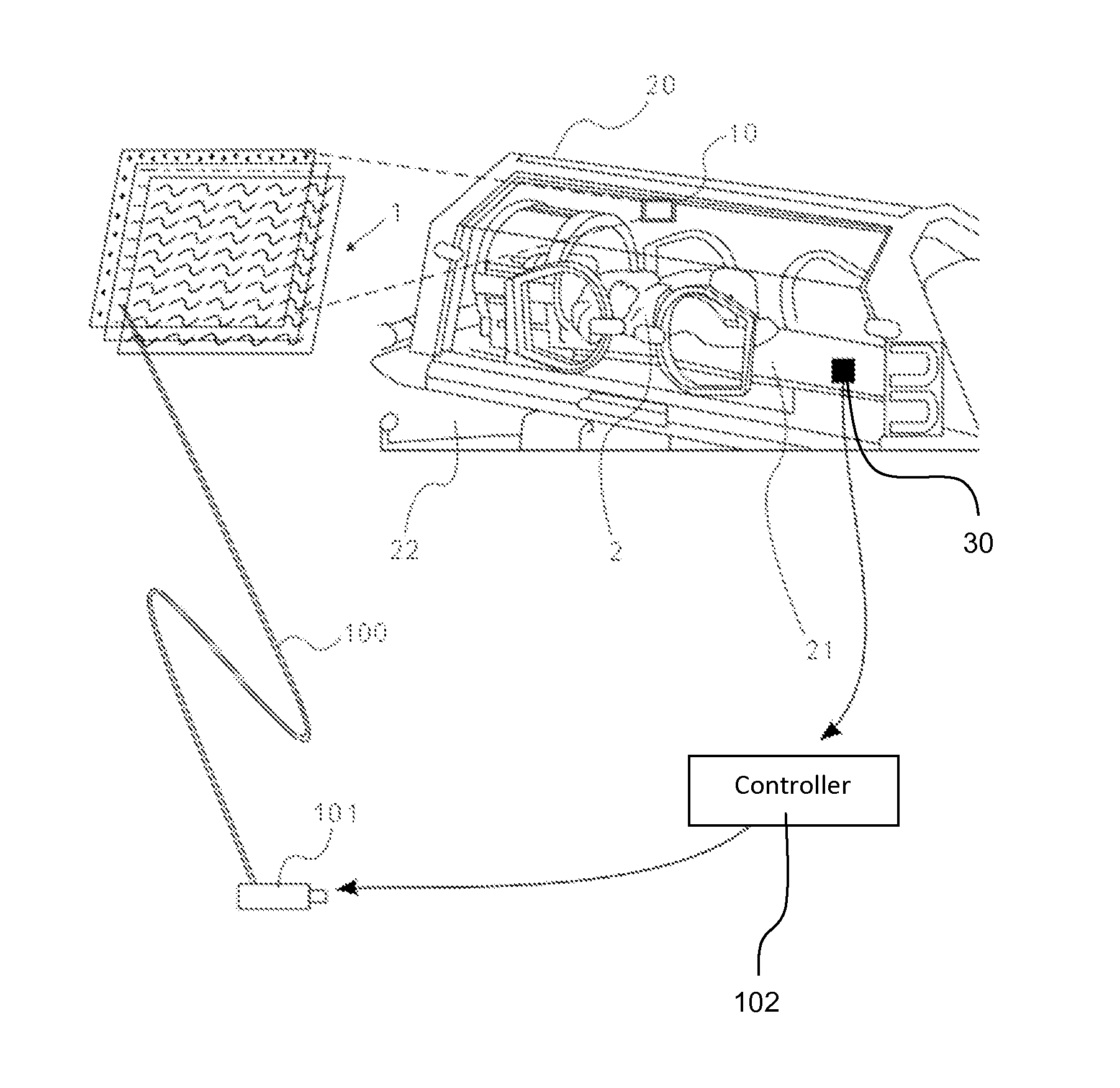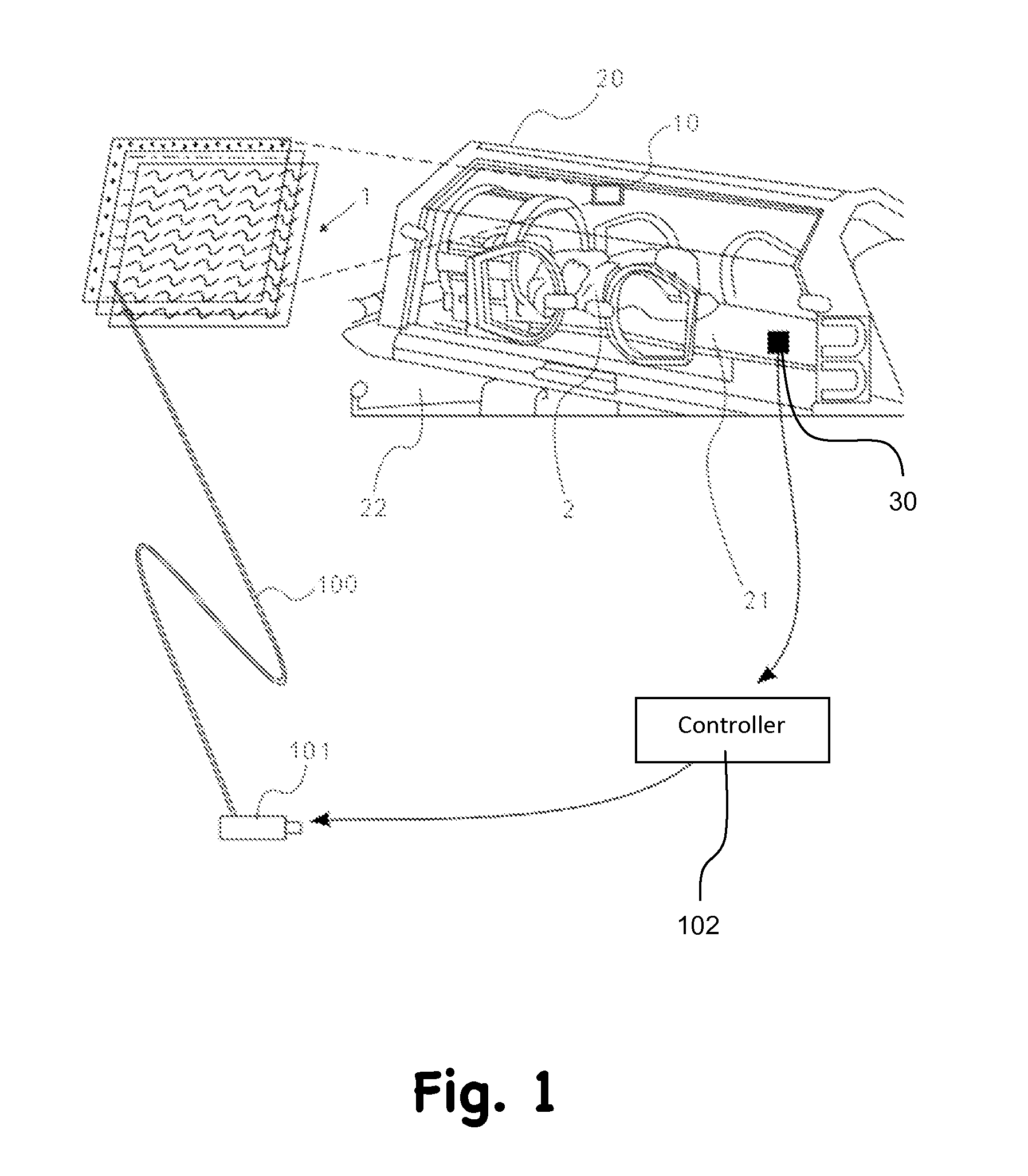Incubator's canopy with sensor dependent variably transparent walls and methods for dimming lights thereof
a technology of variably transparent walls and incubators, which is applied in optics, medical science, hospital equipment, etc., can solve the problems of mechanical dimming of light, adversely affecting the rest-activity patterns of newborns, etc., and achieve the effects of reducing or increasing the heat within the incubator, reducing or increasing the light transparency, and reducing or increasing the hea
- Summary
- Abstract
- Description
- Claims
- Application Information
AI Technical Summary
Benefits of technology
Problems solved by technology
Method used
Image
Examples
Embodiment Construction
[0029]The term “smart incubator's glass” (SIG) refers herein after to one or more members of a group consisting of Electrochromic devices, Suspended particle devices, Polymer dispersed liquid crystal devices, Micro-blinds, Mechanical smart windows, Nanocrystals and combination thereof adapted to at least partially reduce the light transparency of neonate's incubators' canopies, windows or walls.
[0030]It is thus in the scope of the present invention wherein electrochromic devices are incorporated or comprised in or otherwise are in connection with an infant's incubator's canopy, and further adapted according to at least one sensor detecting light or heat, converting these parameters into electrical current. Electrochromic devices change light transmission properties in response to voltage and thus allow control over the amount of light and heat passing through.
[0031]According to an embodiment of the invention, in electrochromic canopy of incubators, the electrochromic material, as di...
PUM
| Property | Measurement | Unit |
|---|---|---|
| voltage | aaaaa | aaaaa |
| voltage | aaaaa | aaaaa |
| Transparency | aaaaa | aaaaa |
Abstract
Description
Claims
Application Information
 Login to View More
Login to View More - R&D
- Intellectual Property
- Life Sciences
- Materials
- Tech Scout
- Unparalleled Data Quality
- Higher Quality Content
- 60% Fewer Hallucinations
Browse by: Latest US Patents, China's latest patents, Technical Efficacy Thesaurus, Application Domain, Technology Topic, Popular Technical Reports.
© 2025 PatSnap. All rights reserved.Legal|Privacy policy|Modern Slavery Act Transparency Statement|Sitemap|About US| Contact US: help@patsnap.com


